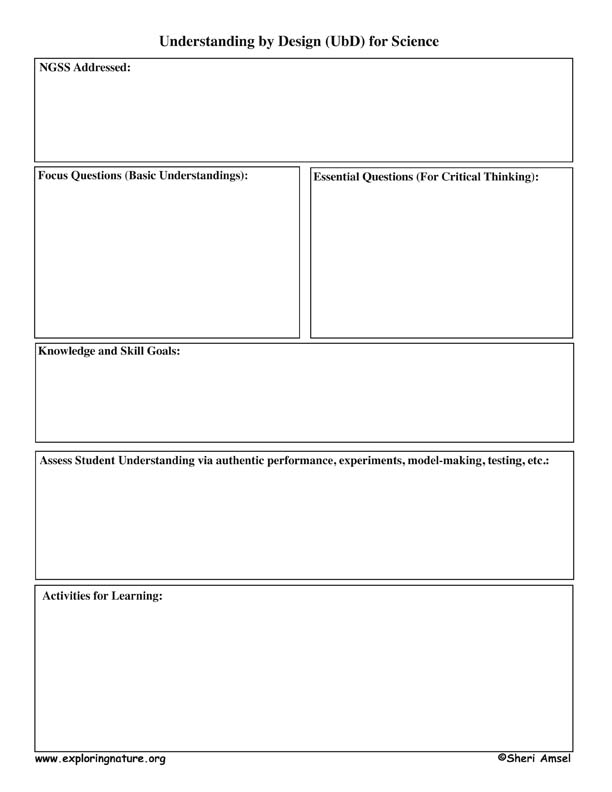

Understanding by Design (UbD) works backwards from traditional teaching methods, starting with the lessons' goals and objectives (the “outcomes”) and planning curriculum to reach that goal.
UbD is an an especially effective tool for science education because it dovetails effectively with the Next Generation Science Standards and Common Core.
For example, to teach students about Classification and Biodiversity, try the Classification Authentic Performance. This integrates the use of classification, conservation, biodiversity and ocean ecology along with Model Building.
Authentic performance activities help assess the students' understanding of the topic as they explain and inerpret their "job" using this knowledge. Imagine every science topic integrating an authentic performance to illustrate to students how this knowledge can be applied to every day life, potential future careers and world issues like medical health, conservation and public safety. At the same time, the educator, other students and the students themselves can assess their grasp of the concepts.
Use our working template as a guide to integrate UbD and NGSS into lesson plans and our UbD Graphic Organizer to help summarize your specific lesson designs. Note that each lesson begins first with Goals and Essential Questions before moving on the knowledge assessmeant and acquisition.
This teaching tool was described in Understanding by Design (1998) by Jay McTighe and Grant Wiggins published by the Association for Supervision and Curriculum Development.
When you research information you must cite the reference. Citing for websites is different from citing from books, magazines and periodicals. The style of citing shown here is from the MLA Style Citations (Modern Language Association).
When citing a WEBSITE the general format is as follows.
Author Last Name, First Name(s). "Title: Subtitle of Part of Web Page, if appropriate." Title: Subtitle: Section of Page if appropriate. Sponsoring/Publishing Agency, If Given. Additional significant descriptive information. Date of Electronic Publication or other Date, such as Last Updated. Day Month Year of access < URL >.
Amsel, Sheri. "Understanding by Design (UbD) Graphic Organizer" Exploring Nature Educational Resource ©2005-2024. March 26, 2024
< http://www.exploringnature.org/db/view/4537 >
